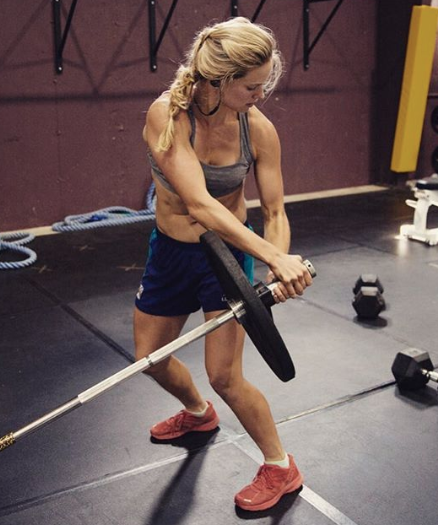Now the new coach of the Middlebury College Nordic Team, Johnson continues to use the workout with the athletes under his direction.
What you need: bounding poles, rolling terrain (ideally an 8-12 minute loop of a ski trail to monitor pacing).
The workout:
- 30 minute warmup
- 25-60 constant L2 on rolling terrain, with poles
- Cool down
“The workout instruction is to run the flats and downhills at about a level 2 pace and ski-bound the uphills,” Johnson explained.
After a 30-minute warmup, the duration of the workout for Johnson’s college skiers is 25 to 60 minutes, depending on time of year, athlete ability and level of exertion during the bounding portion. The length and grade of each hill dictates whether the bounding is at peak intensity or ski walking. The jog down the other side is recovery time, but Johnson stressed that one should maintain a steady effort and find a pace sustainable for the entire workout.
“I think it simulates skiing quite well without having to be on rollerskis, which is a hard thing to find,” Johnson said. “Anyone who’s done much bounding knows that it’s a great simulation of trying to get up a steep hill in a classic race, and there aren’t many ways to experience that effort and pain without snow.”
As a coach, Johnson appreciates the simplicity of the workout when he explains it to a large group of athletes. He also likes the infinite variability of the intervals; if the day’s goal is to not exceed Level 3 intensity, the athlete must adjust how they climb and descend accordingly. It can also be ramped up to maximum effort.
Pete Vordenberg, the accomplished USST racer and eventual coach, was training on the Northern Michigan University campus the summer Johnson first learned of this workout 17 years ago. It was the subject for NMU coach Sten Fjeldheim’s “Continuous Bounding” session, and Johnson recalled a Fjeldheim story claiming the workout was “pivotal” for Vordenberg, too.
“I can’t remember all the details from the workout that day [in 1996], but I remember it really resonating with me as a fun and quality workout that I knew I wanted to start using in my regular training,” Johnson said.
Steven McCarthy
Steven McCarthy discovered a passion for sportswriting in the classrooms of the University of Maine school of journalism. He earned his Bachelor's degree in 2010, while complementing his studies covering two years of UMaine sports and summer college baseball on Cape Cod. He resides in southern Maine and works in a private school for kids with autism. In his spare time he's training for his next marathon (running or skiing) or coaching at a local high school.




